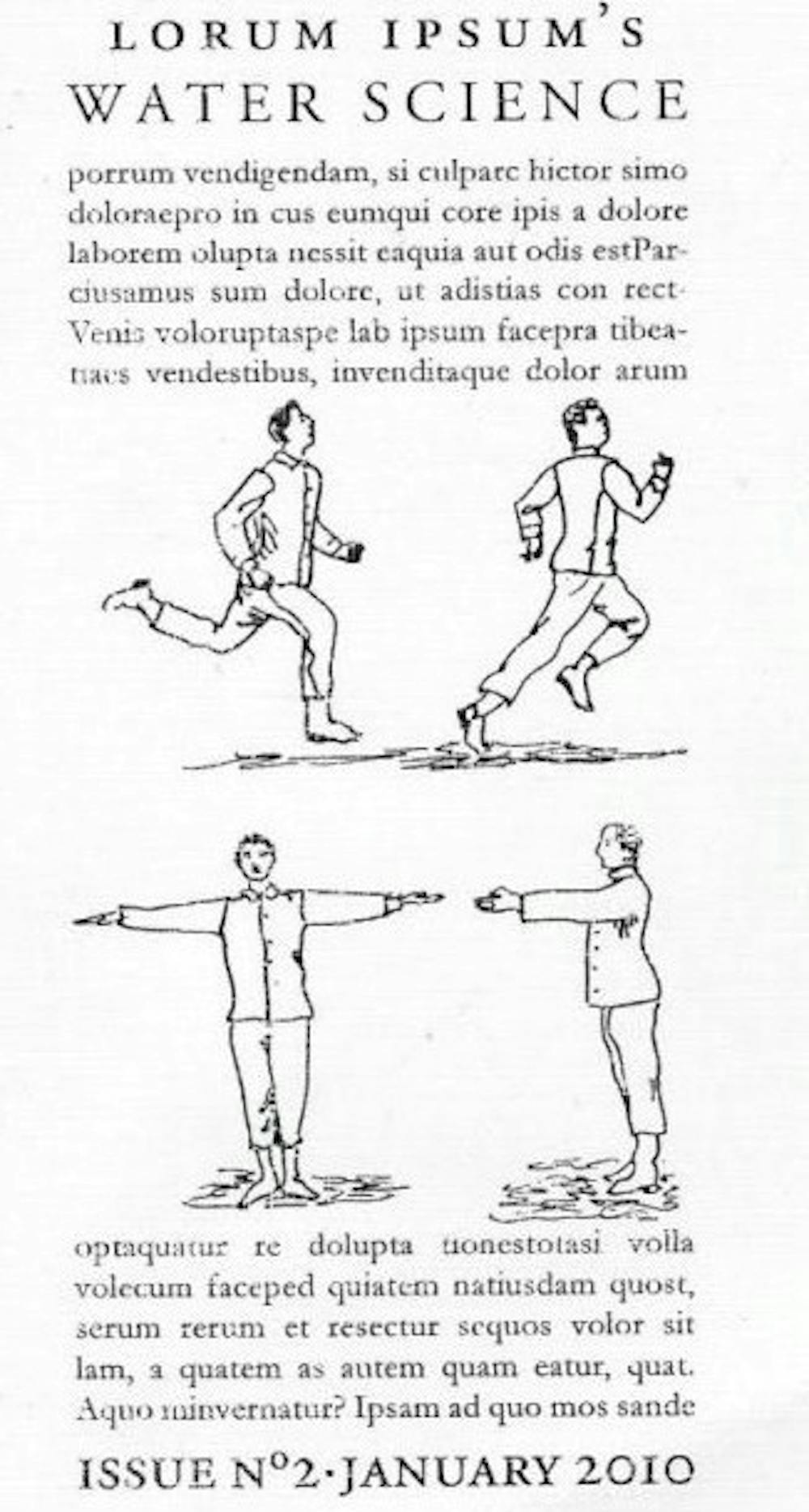In the song “Flagpole Sitta,” by Harvey Danger, the narrator yearns to live a prototypical '90s-alternative lifestyle where he will “publish zines and rage against machines.” Creating lasting pieces of independent literature and challenging the expectations of society go hand in hand, and are surely goals that can be accomplished. For Arizona State University journalism alumnus Chase Kamp, the angsty narrator’s dream of making a statement with print media is a fact of life. He edits the zine (pronounced "zeen"), "Water Science."
"Water Science" initially looks like an unassuming, photocopied, DIY, staple-bound periodical. However, while most well-known zines, such as "Maximumrocknroll," "HeartattaCk" and "Razorcake," focus on underground music, this zine is a collection of literary pieces by young writers from Phoenix and New York, including a few ASU students. Some of the major influences on the zine, according to Kamp, are the very prosaic punk zine "Cometbus," as well as the "McSweeney's Quarterly Concern" literary journal.
This foray into the realm of serious literature by no means distances the zine from its punk nature. For Kamp, any DIY project like "Water Science" contains some inherent rebellion against convention.
“It's all about weakening the barriers to entry,” Kamp says. “You print it yourself. You go to Kinkos and you print it yourself.”
But in literature the barriers to entry are not just a complicated web of publishers and distributors. Age itself can be a limiting factor as well.
“In the literary world, under 35 is young,” he says. “You don't reach your peak until you are well into your 30s, and that is the only gauge of respect. Very rarely do young authors emerge.”
The voice of the youth, that has made itself heard in other forms of media, is diminished much more in literature. For Kamp, it was important to take a grassroots approach to literature, circumventing age-old barriers to make sure works from writers of the ‘80s generation, which he praises for their “personal grit” and “creative integrity,” were documented and publicized.
“So many forms of music rose out the ground because of youthful attitudes,” he says. “Literature is so much more concentrated and based on experience, so when you put it out a zine, it validates the youth experience.”
The youth experience can be more easily validated now, not only due to the easy nature of zine making, but also thanks to digital media such as blogs, .pdf files, and digital zine software such as ISSUU. But many zine publishers will always have a soft spot for printing on “real paper.” Kamp believes that writers put a lot more heart into printed zines because they are tactile and have lasting value. Essentially, no one wants to waste the paper on something that sucks.
“I feel like now, because of all the digitization of different media,” he says, “if you are going to put out something analog, an actual artifact, you have to make it really cool and worth the effort.”
Leaving a good mark is very important, because as much as people pronounce print media to be dead, it tends to survive longer than expected. Consider the fact that there are feminist zines from the '90s on display at New York's Museum of Modern Art right now while every single feminist Geocities website from the same time period has been erased out of existence (a completely digital existence at that). Even if they get thrown away, printed documents still have a chance of being found by future archaeologists and used for relative dating, as the Tucson Garbage Project of the 1970s showed.
"Water Science" cannot be found in any museum yet, but by no means should one discover it in a landfill. The previous two issues can be picked up at Eastside Records in Tempe for about $3 to $5 each, a small price for 66 pages of work from young writers and illustrators. The third issue failed to make its release party in September, but may reach shelves by December.
If you go to Eastside Records to pick up "Water Science," check out other local and national zines. And see if they have a copy, used or new, of anything by Harvey Danger. Both will certainly inspire you to do greater things.
Contact the reporter at mbogumil@asu.edu.






